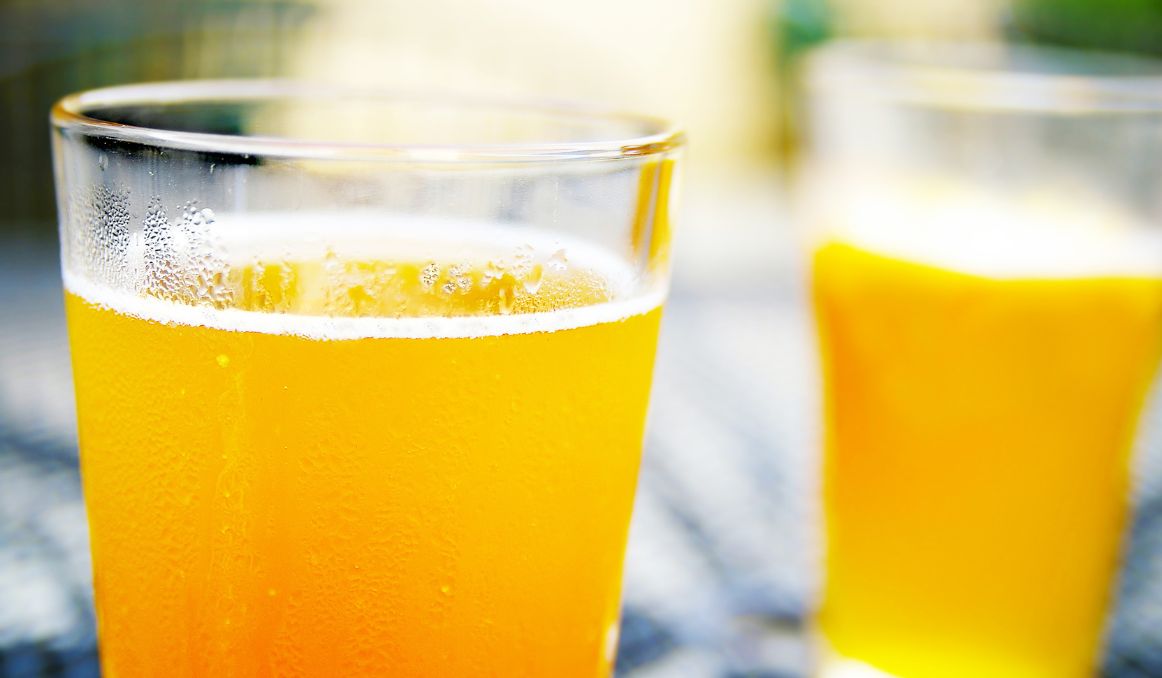A Hefeweizen Uses Bottom Fermenting Yeast. True or False?
Hefeweizen is the most popular of all wheat beers the world over, and it is indeed one of the most popular beers in general. You can find Hefeweizen from Germany to America, with great applause all around.
But what is a Hefeweizen, anyway? Some have said that a Hefeweizen uses a bottom fermenting yeast, others that it uses a top fermenting yeast. What, after all, is the true nature of the beloved Hefe?
What Is Hefeweizen?

The Hefeweizen traces its origins back to Germany and Bavaria in the 1400s. Some brewers in the region began experimenting with variations on what had become the standard for beer – barley, water, and hops.
Wheat was a plentiful crop, so brewers began to malt wheat and add it to their beer ingredients for additional flavoring.
However, purity laws were passed in Germany as a result of some brewers using unsafe preservation techniques that were making people sick.
The laws states then that brewers could only use barley, water, and hops in beer. Anything else was prohibited. This law also prohibited the importation of beers that would not stand up under strict scrutiny.
Fortunately some rebellious brewers began adding wheat to their beer as a protest, and some members of the royal family were able to try these experiments. They loved the wheat addition to beer, and the laws were quickly changed, allowing for the addition of wheat to beer.
As a result, Weissbier was created. Weissbier translates as wheat beer, and breaks down into four categories: Kristallweizen, Dunkelweizen, Weizenbock, and Hefeweizen.
Kristallweizen is a wheat beer that is highly filtered, so it appears clear. Dunkalweizen is brewed with dark malts, so it is a rich, dark, bready beer. And Weizenbock is a mix between the two, a clear, dark malty wheat beer.
Hefeweizen, the favorite, literally means “yeast wheat” because the yeast is left suspended in the beer even after it ferments, presenting a cloudy, hazy, white beer that beer drinkers have come to love.
A traditional Hefeweizen will give off notes of banana, clove, and vanilla, in addition to the heavy wheat flavor and aroma.
Today, a wheat beer can only be called a wheat beer if the beer contains more than 50% wheat. Many wheat beers will have only slightly more than 50% while others will have significantly more.
The difference between German Hefeweizen and American Hefeweizen lies generally in the amount of wheat. German brewers tend to use more wheat, while American brewers will allow for more barley in the combination.
Function of Yeast
You may notice that those purity laws mentioned above did not mention yeast. That is due to the fact that yeast was still not a technical ingredient yet. It could still simply come in to the vessel from the wild to ferment.
The role of yeast is expressly to ferment, and in truth we cannot have beer, wine, or any other alcohol beverage, not to mention leavened bread, without it.
There are hundreds of substrains of yeast, and all of them stem from three main strains – ale yeast, or Saccharomyces cerevisiae, lager yeast, or Saccharomyces pastorianus, and Brettanomyces, which is called “wild yeast.” Wild yeast is kind of a misnomer as all yeast exists in the wild, but Brett is referred to as wild because it is volatile and can be highly unpredictable.
Types of Yeast
Ale Yeast
S. Cerevisiae was long the only yeast we knew about. Brewers would toast, or malt, their grain, steep it in water, add hops, and then allow yeast to ferment the brew.
The yeast that came in from the wild existed and fermented at warmer temperatures and flocculated, or gathered/clumped, at the top of the fermentation vessel.
For thousands of years, this ale yeast was the only yeast we knew, so all beer was in effect ale.
Lager Yeast
Then, in the 1400s, some monks in the Bavarian region decided to store their beer in cold caves. To their surprise and delight, they brewed an entirely different beer, lager.
S. Pastorianus thrives and ferments at cooler temperatures, so it can only be found there. Unlike ale yeast, lager yeast flocculates, or collects, at the bottom of the fermentation vessel.
Bret
Brettanomyces, this wild yeast, is usually used in conjunction with one of the other two yeasts, and while it will not krausen, meaning frothing and bubbling on the brew, it will form pellicles or clumps and eventually drop to the bottom of the vessel.
What Yeast Ferments Hefeweizen?
Hefeweizen is a warmer weather beer, fermenting after wheat harvest, during late summer and early fall. As such, it is a top fermenting ale, not a lager.
Though, of course, some Hefeweizen can be made as lagers, simply fermenting naturally at cooler temperatures with the addition of S. Pastorianus. But traditionally, the beloved wheat beer, both in Germany and in America, is an ale and is thus top fermenting.
Either way, wheat beer fans love it!
Cheers!
Passionate about the beer and/or wine making process? So are we! If you’re interested in finding out how you can use our technology to control fermentation and monitor your yeast, save work hours and improve the cost-efficiency of your business, drop us a line at [email protected] or check out our product pages:
- Oculyze BB 2.0 (Better Brewing) Yeast Cell Counter App + Hardware
- Oculyze FW (Fermentation Wine) Yeast Cell Counter App + Hardware
Also, you can now get access to a fully functional demo account to test your yeast via our Web App. Completely free of charge and with no commitment to purchase.
Sources:



